Arizona Day at Manzanita: Third Grade Learns the “Five C’s” — the Hands-On Way!
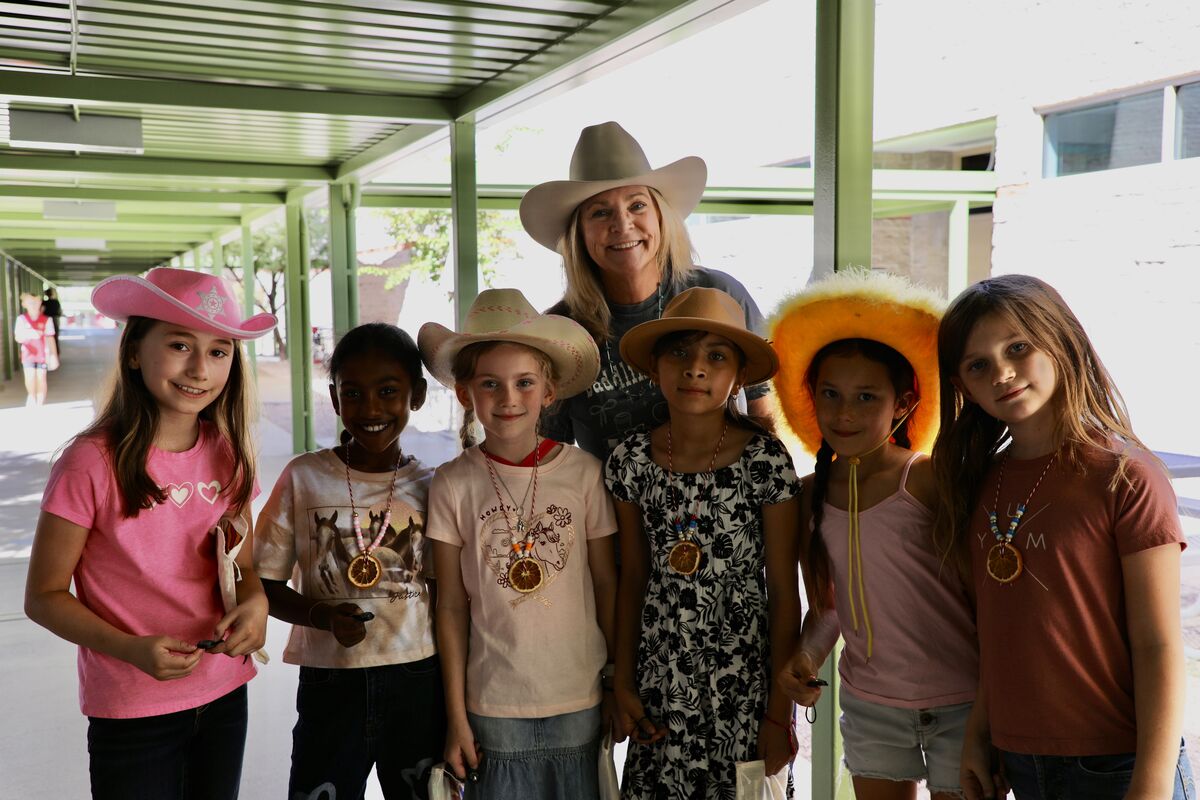 As part of Manzanita’s long-standing Arizona Day tradition, third graders spent the morning rotating through interactive stations that brought Arizona history and industry to life. Students observed, tested, created, and reflected, then added artifacts to the Arizona notebooks they created.
As part of Manzanita’s long-standing Arizona Day tradition, third graders spent the morning rotating through interactive stations that brought Arizona history and industry to life. Students observed, tested, created, and reflected, then added artifacts to the Arizona notebooks they created.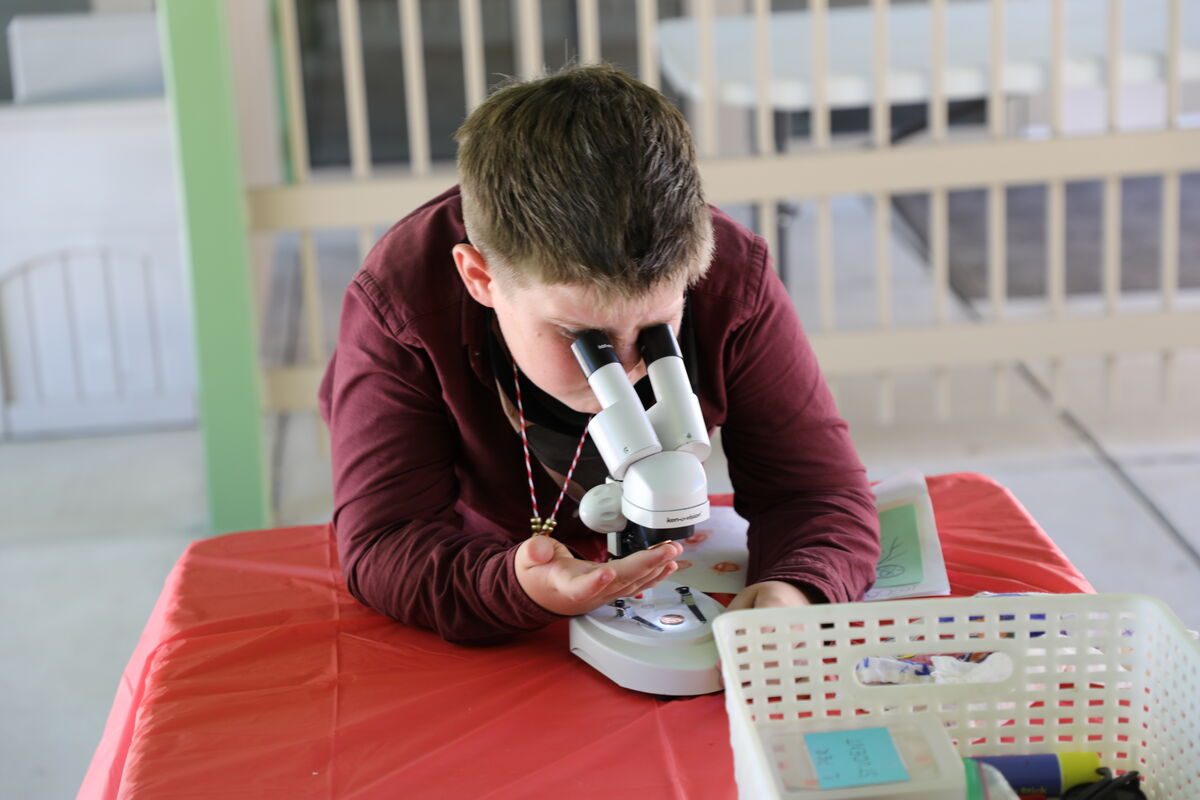 Copper Station
Copper Station
Students examined a real copper ore sample and noticed how copper can shine reddish-brown or turn green as it oxidizes. They learned that copper conducts electricity (think phones and power lines!) and has been used by people for thousands of years. After a demo, students made penny rubbings with crayons, glued a copper facts sheet into their books, and kept their souvenir penny. Fun fact: Did you know that copper has been used to make tools for 10,000 years?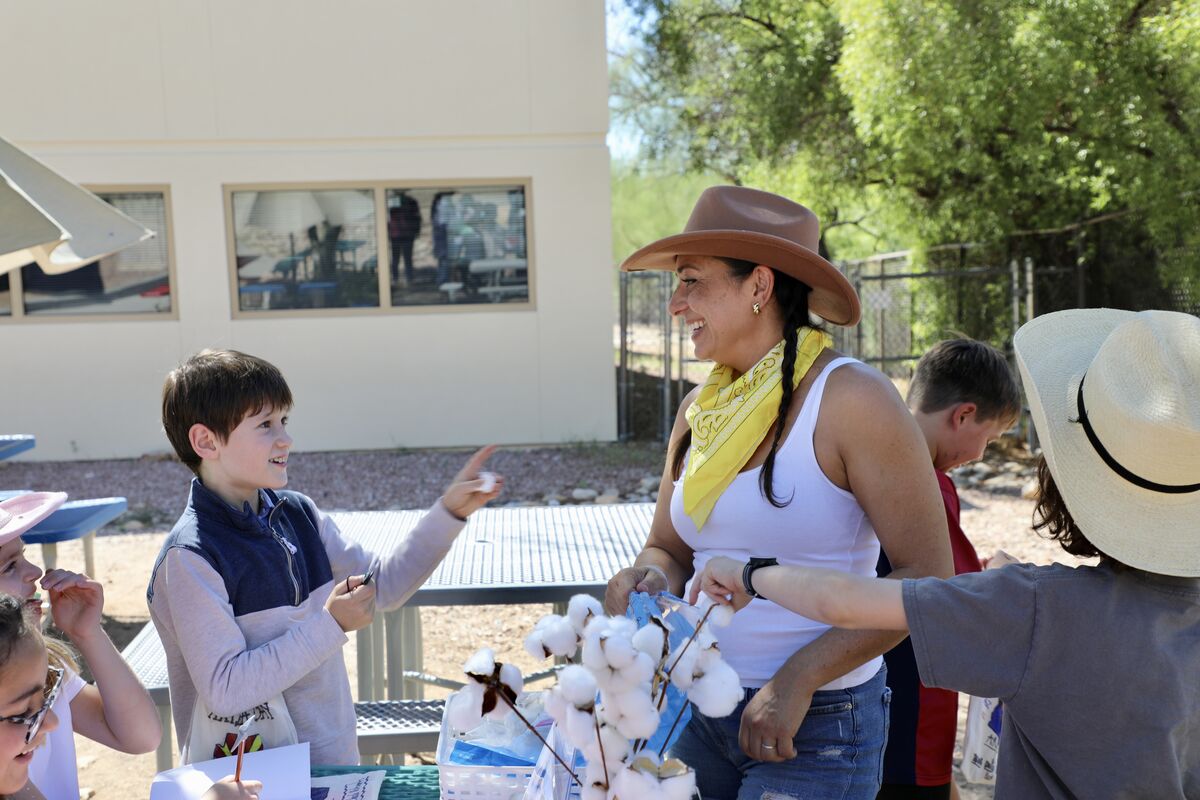 Cotton Station
Cotton Station
Classes explored how cotton thrives in the Sonoran Desert and talked about what everyday items are made from cotton (from denim to bookbinding). Students sequenced the cotton life cycle, drew it in their notebooks, touched an authentic cotton plant to feel for seeds, and added a cotton ball to their life-cycle page.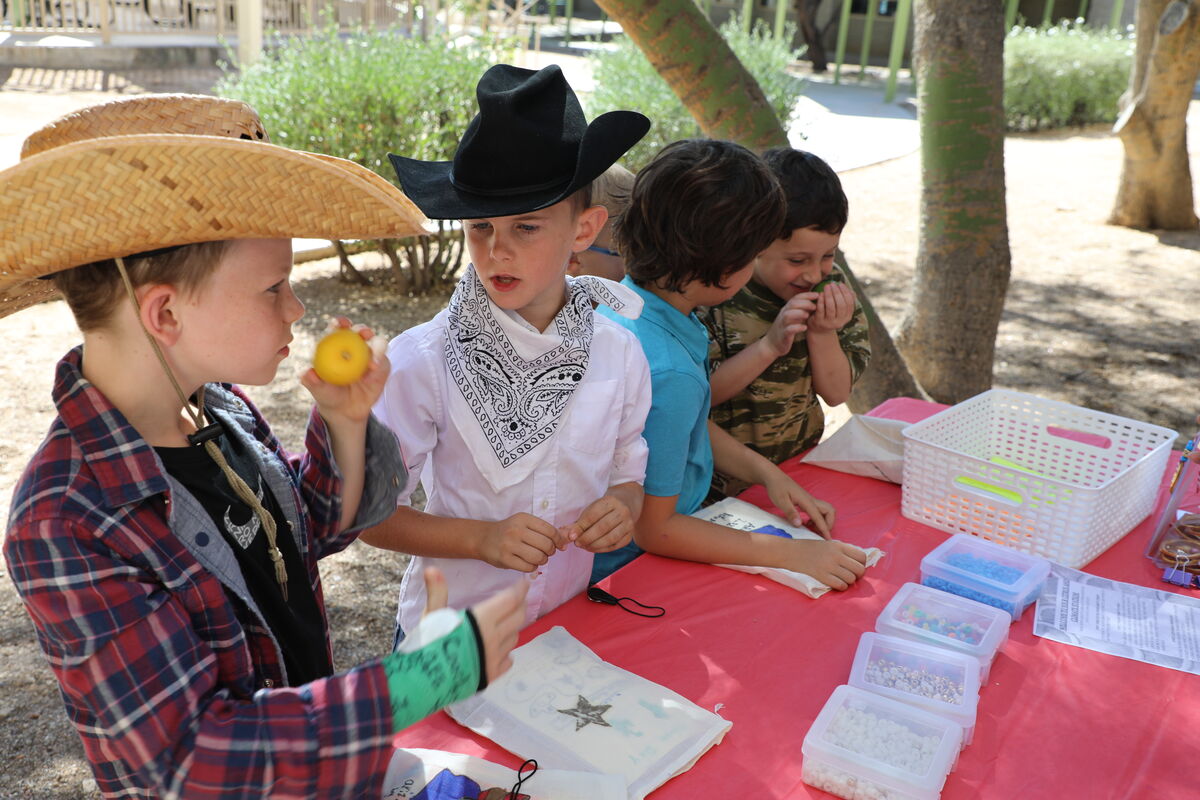 Citrus & Climate Station
Citrus & Climate Station
Why do citrus trees love Arizona? Sunshine, warmth, and well-drained soil. Students identified different citrus fruits and then received a citrus-slice necklace. Before leaving, they reflected on two questions: What did you learn about citrus and the state of Arizona? Which citrus fruit is your favorite?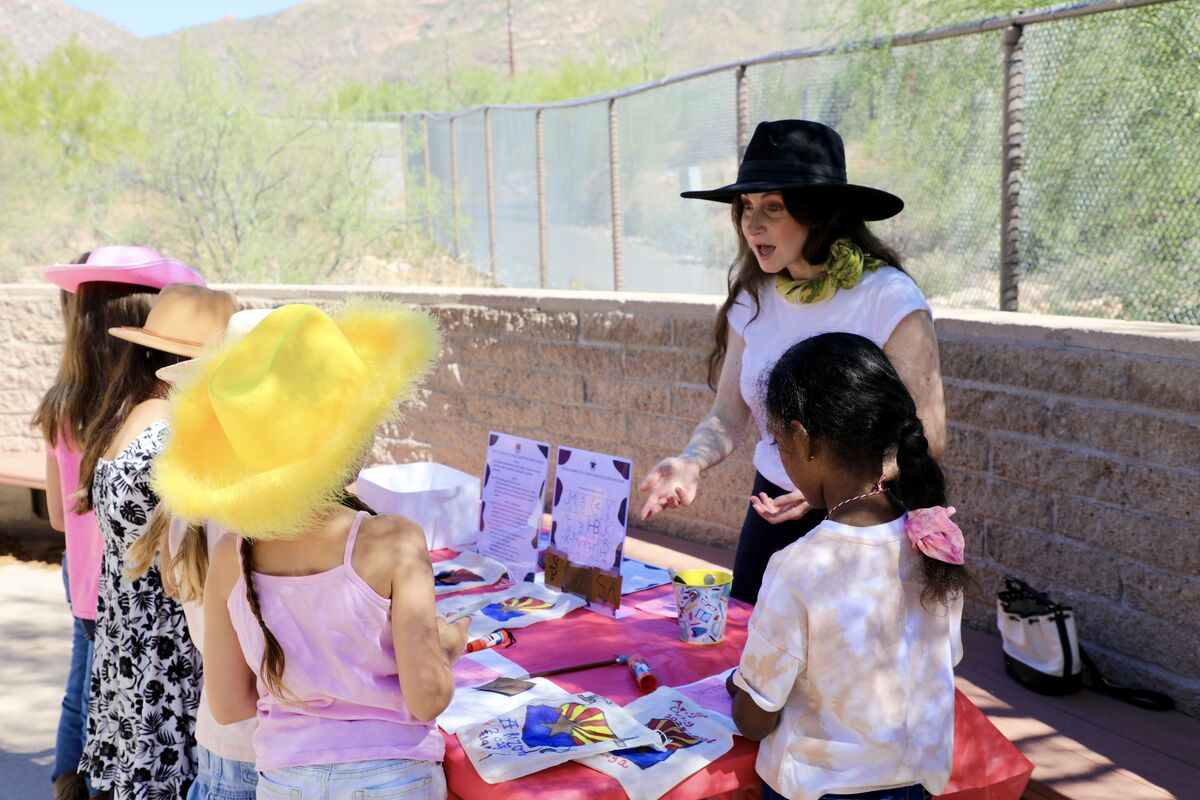 Cattle Station
Cattle Station
After reading about Arizona’s ranching history and the many uses of leather, students learned how simple, recognizable brands help identify cattle. They sketched a personal brand using initials, shapes, or symbols (such as stars, trees, or mountains) and transferred it onto a faux leather piece for their notebooks.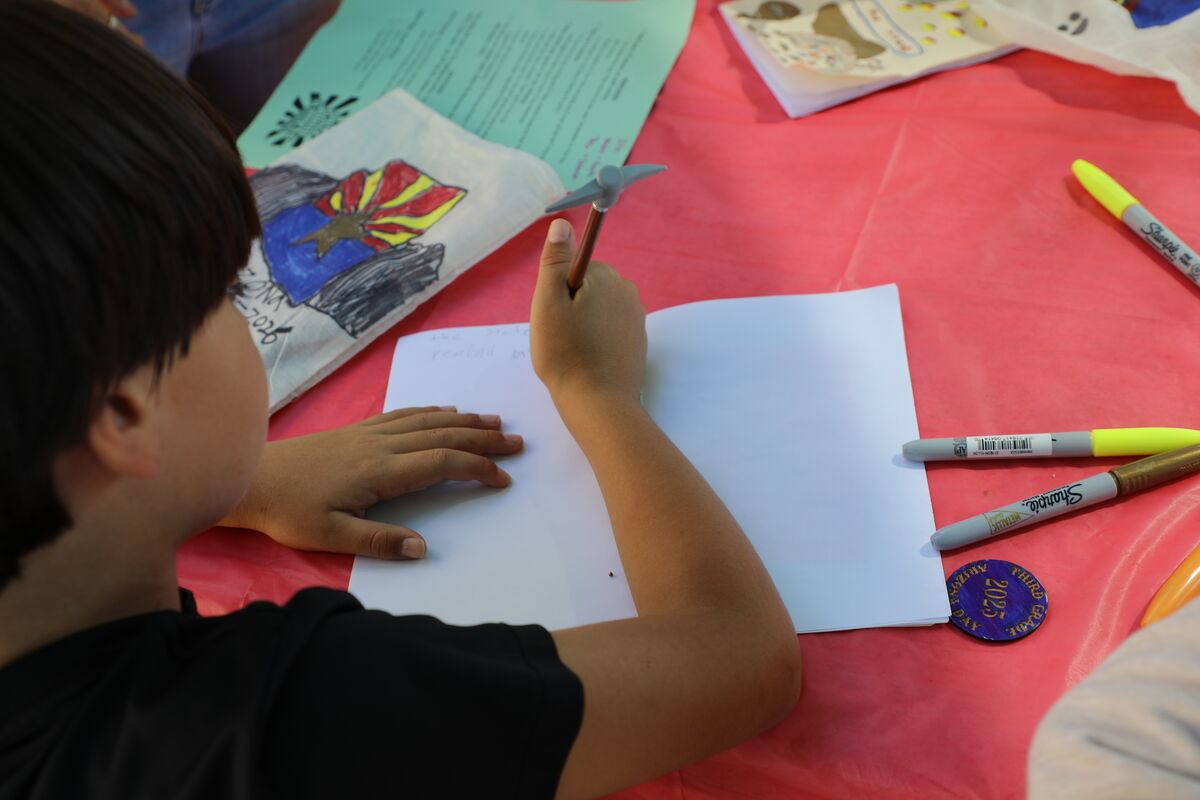 State Seal Station
State Seal Station
Students discovered the meaning behind Arizona’s state seal: mountains and sun (climate), the plow (cotton & citrus), the miner (copper), and the cow (cattle), plus the ribbon “Ditat Deus” and the statehood date 1912. They colored a seal and glued an information sheet to remember each symbol. They even wrote their notes using special pick-ax pens.
Throughout the day, students practiced close observation (even peeking through a microscope!), asked great questions, and connected what they saw to Arizona’s economy and heritage.
Kudos to Ms. Westmoreland, our Manzanita team, and the wonderful parent volunteers who helped at each station. Ask your third grader: Which of the five C's is your favorite reason to live in Arizona and why?

 Additional settings for Safari Browser.
Additional settings for Safari Browser.


